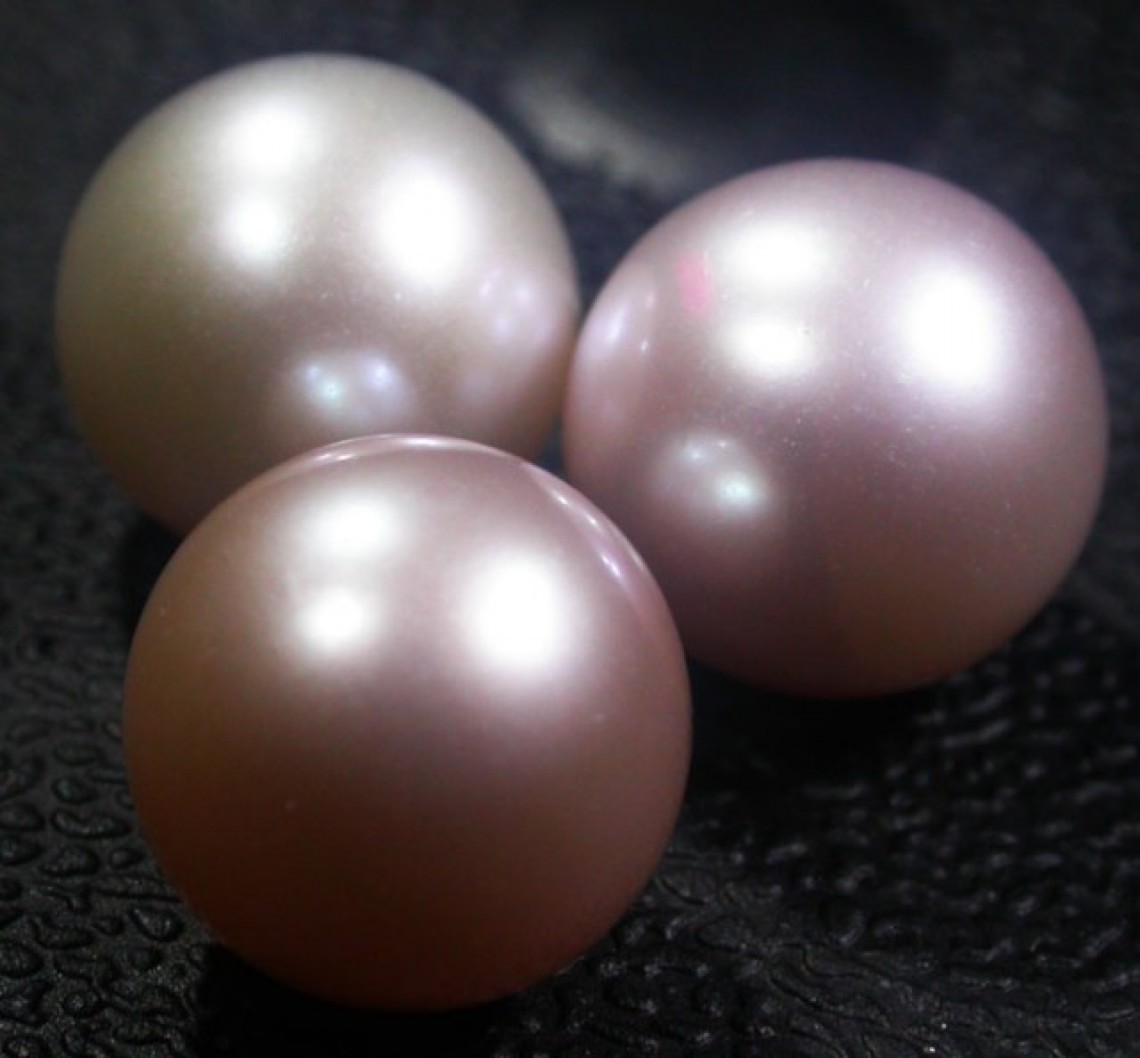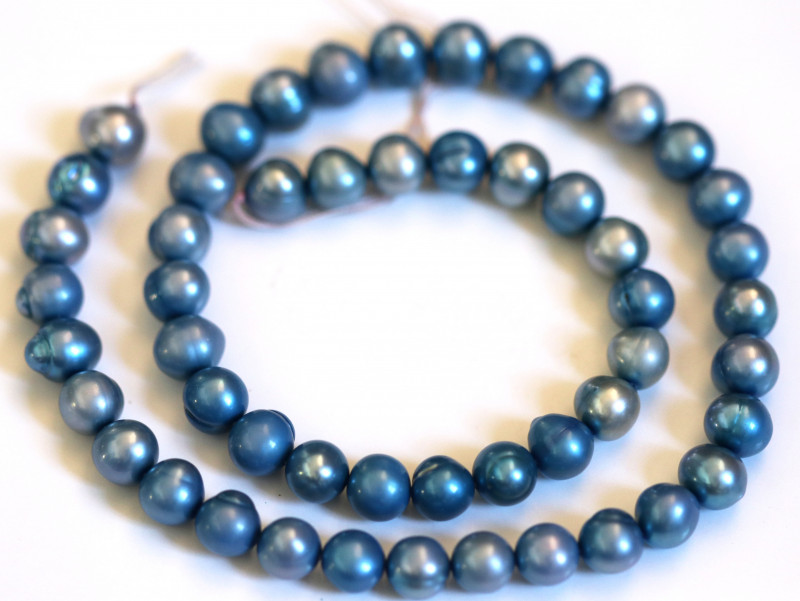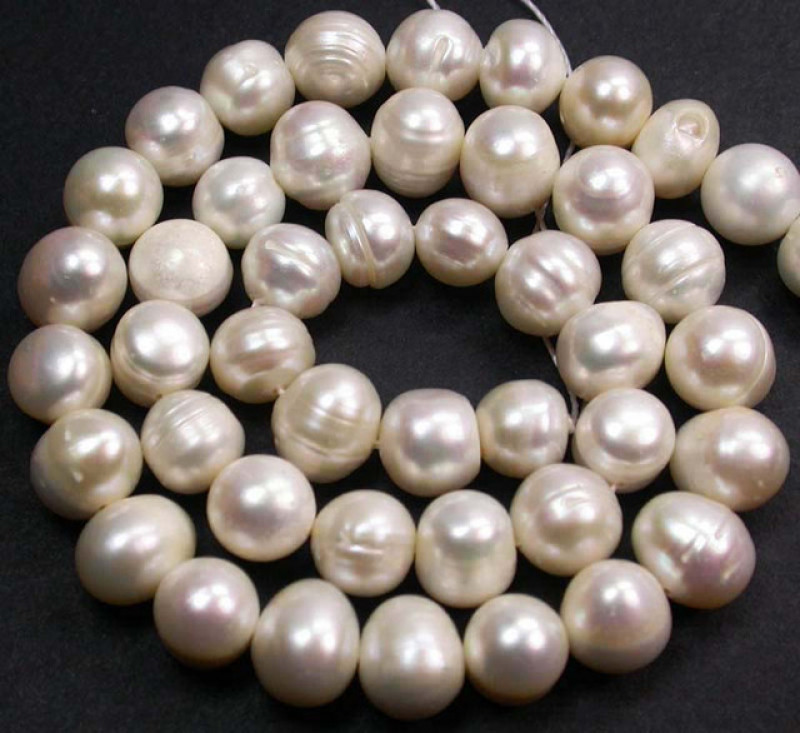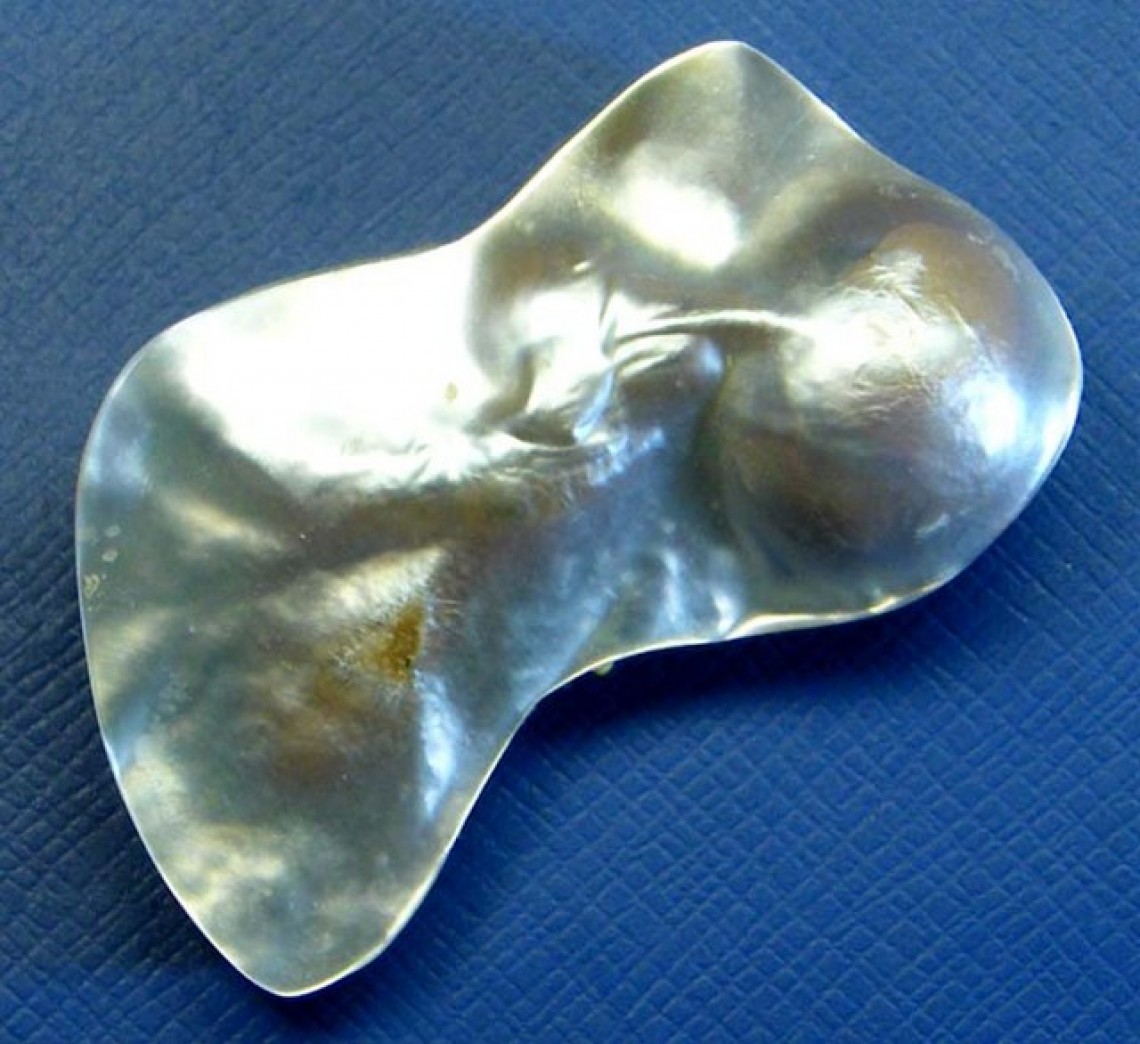
Različite vrste bisera

Biseri su odavno simbol ljepote i čistoće. Oni su suvremeni klasici, a sada postoji daleko više modernih opcija za odabir od niske bisera koju pamtite kako visi s vrata vaše bake.
Postoji nekoliko vrsta bisera koje možete odabrati kako biste svojoj kolekciji nakita dodali prekrasne komade.
Vrste bisera
Biseri nastaju kada iritansi (poput pijeska, na primjer) pronađu put do ljušture mekušca. Kao reakcija, mekušci počinju proizvoditi slojeve sedefa oko iritansa. Kod prirodnih bisera, iritans obično dolazi iz vode kojom je okružen, dok kod kultiviranih bisera ljudi ubacuju komadić tkiva kako bi pokrenuli proces.

U oba slučaja formiranja bisera , kvaliteta sedefa diktirat će kvalitetu sjaja i blještavila bisera. To je ključno i za njegovu vrijednost i za ljepotu. Površina bisera treba biti glatka i bez tragova. Sam oblik može biti okrugao, deformiran ili kruškast. Deformirani biseri nazivaju se baroknim biserima.
Kada kupujete bisere, imajte na umu da su dostupni u različitim duljinama:
Biserna ogrlica prianja uz grlo.
Ogrlica od bisera leži na dnu vrata.
Duljina princeze (17-19 inča) obično se nalazi blizu ključne kosti.
Duljina popodnevne predstave iznosi oko 20 – 24 inča.
Duljina opere je mnogo veća, 30-36 inča.
Duljina užeta je najduža opcija, koja opisuje bilo koju nit dulju od 36 inča.
Postoje dvije klase ogrlica:
Graduirano, gdje se veličine bisera mijenjaju od kraja prema središtu
Ujednačeno, gdje su svi biseri otprilike iste veličine.
Prirodni biseri
Tradicionalno, većina prirodnih bisera pronađena je u Perzijskom zaljevu. Međutim, većina ih je već ubrana, stoga su prirodni biseri izuzetno rijetki. Možda ćete pronaći male, prirodne bisere dostupne za kupnju, ali su skupi.
Kultivirani biseri
Kultivirani biseri su vrsta bisera koji se uzgajaju na farmi bisera. Mekušci se uzgajaju na farmi i kada dovoljno odrastu, tehničar će im usaditi perlu od sedefa. Mekušci se zatim vraćaju u vodu i brinu o njima dok se biseri ne formiraju.
Neće svaki mekušac proizvesti biser, i neće svi biti visoke kvalitete. Možda će trebati sortirati preko deset tisuća bisera prije nego što se može usporediti jedna princezina duljina uniformnih bisera.
Biseri se mogu pronaći i u slatkoj i u slanoj vodi - osim toga, razni mekušci mogu proizvesti bisere različitog izgleda. Pročitajte više o kultiviranim biserima ovdje .
Slani biseri
Akoya Pearl

Ovaj kultivirani biser uzgaja se u kineskim i japanskim vodama. Općenito su veličine oko 2 mm, ali u nekim rijetkim slučajevima mogu biti veliki i do 10 mm. Okrugli su i obično krem ili bijele boje. Dolaze od kamenica Pinctada fucata martensii, koje su prilično male - stoga se od njih proizvode manji biseri. Akoye je izvorno u SAD uvezla tvrtka Mikimoto. Međutim, kvaliteta je pala zbog primarnog izvora bisera koji se seli u Kinu. Unatoč tome, Mikimoto je i dalje najrasprostranjenija marka bisera. Biseri marke Mikimoto imaju visoku cijenu koja ne odgovara uvijek kvaliteti koja se prodaje.
Biser Južnog mora

Ovaj biser se proizvodi na Filipinima, u Australiji i Indoneziji. Najveći je od svih bisera i veličine mu je od 9 mm do 20 mm. Mogu biti krem, bijele ili zlatne boje i beru se s kamenice Pinctada maxima.
Tahićanski biser

Unatoč nazivu, tahićanski biseri ne proizvode se isključivo s Tahitija. Uzgajaju se na nekoliko francuskih polinezijskih otoka. Njihova veličina općenito se kreće između 8 mm i 16 mm. Ovi biseri su prirodno obojeni u plavoj, ljubičastoj, zelenoj i sivoj boji, ali su zajednički poznati kao crni biseri. Tahićanski biser dolazi od crnousne kamenice, Pinctada margaritifera.
Tahićanski biseri smatraju se najupečatljivijim i najtraženijim biserima na tržištu danas. Iako se često opisuju kao crni, njihove boje pokrivaju cijeli spektar od tamnocrne do srebrnobijele, te gotovo svaku boju između, uključujući najprihvaćeniju paunovu i zelenu. Boje ovih tahićanskih bisera su potpuno prirodne i zajamčeno neobrađene. Za najelegantnije bisere, razmislite o cijelom nizu tahićanskih bisera.
Plavi biseri

Nastaju u mekušcu Paua, koji je vrsta morskog uha. Dostupni su u širokom rasponu plavih nijansi, iako dolaze i u drugim bojama, poput zlatne, ružičaste, zelene, crvene i ljubičaste. Imaju kameleonsku kvalitetu, jer svjetlost uzrokuje promjenu boja. Upravo te promjene boja daju svakom biseru njegov prepoznatljiv karakter.
Slatkovodni biseri

Ove vrste bisera obično se uzgajaju u rijekama, ribnjacima i jezerima - i pretežno u Kini. Mnogi od njih su bijeli i općenito podsjećaju na biser Akoya i veličinom i oblikom. Međutim, mogu se proizvesti u različitim oblicima i nizu pastelnih boja.
Većina slatkovodnih bisera nema jezgru zrnca, već samo komadić tkiva koji rezultira debljim sedefastim biserom od kultiviranog bisera Akoya.
Mabe Pearls

Mabe biseri se prilično razlikuju od onoga što drugi ljudi misle o „normalnim“ biserima. Objašnjenje za to proizlazi iz načina na koji se mabe biseri proizvode. Također se smatraju „polusferičnim rafiniranim biserima“. Umjesto da rastu unutar tijela mekušca, poput drugih bisera, rastu unutar školjke.
Ova metoda uzrokuje da mabe biseri imaju ravnu stranu, za razliku od prilično sfernog (ili barem zakrivljenog) oblika poput standardnih bisera. To također objašnjava zašto se mabe biseri redovito nazivaju "polubiserima". Mabe biseri se najčešće proizvode unutar slanovodnih kamenica iz regija Australije, Indonezije, Japana i Francuske Polinezije.
Štoviše, ovi biseri dolaze u širokom rasponu prekrasnih boja bisera, od svijetlo ružičastih do plavičastijih nijansi. Ekskluzivni sedef kamenice mabe omogućuje svjetlucave i duginske nijanse. Njihova živopisnost ponekad je prilično izvanredna, posebno u najrjeđoj boji: ružičastoj sa zlatnim vrtlozima.
Biserna kamenica mabe poznata je i kao "kamenica pingvinovih krila" i koristi se kao matična ljuska. Ovi biseri su široko rasprostranjeni diljem svijeta uz parna i polutropska mora, što ih čini lako dostupnima raznim uzgajivačima bisera diljem svijeta.
Keshi Pearls

Na japanskom, Keshi znači "mak". Riječ se koristi za opisivanje bisera manjih od prosječne veličine sjemenke, nastalih kao nusproizvodi metode uzgoja bisera. Nakon što ostaci uđu u kamenicu tijekom procesa žetve, ova kamenica ih obavija sedefom, stvarajući tako Keshi bisere.
Neki dodatni oblici Keshi bisera uključuju plosnate, pravokutne, ovalne ili neokrugle (naizgled okrugle, ali zapravo blago plosnate ili ovalne). Ovi biseri dolaze u različitim bojama, poput bijele, ružičaste, sive, crne i mnogih drugih. Zbog svog širokog sastava sedefa, izuzetno su sjajni i svjetlucavi. Međutim, Keshi biseri iz Južnog mora i Tahićanski Keshi biseri su najpopularnije vrste.
Imitacija bisera
Imitacije bisera su obično samo obložene staklene perle. Obično imaju visok sjaj, ali ne istu dubinu kao visokokvalitetni kultivirani biseri.
Trebalo bi biti relativno lako razlikovati imitaciju bisera od prirodnog ili kultiviranog bisera. Međutim, može biti teško razlikovati prirodne bisere od kultiviranih bisera. Osim toga, mnogi biseri prolaze krozprocese obrade kako bi im se promijenila boja i pojačao sjaj.
Obrada utječe na vrijednost, stoga je važno potražiti savjet iskusnog zlatara ili gemologa.
Vrste bisera
Najteži aspekt odabira bisera je ocjenjivanje . Nažalost, ne postoji standardni ili priznati sustav za ocjenjivanje bisera. Međutim, tahićanski biseri su malo drugačiji, jer su izvoz i ocjenjivanje pod kontrolom vlade Francuske Polinezije.
Njega bisera
Kao jedno od rijetkih organskih dragulja na svijetu, biseri su prilično osjetljivi. Pravilna briga o vašim biserima ključan je aspekt osiguranja da vaša investicija traje cijeli život. Mnogi proizvodi za osobnu higijenu poput sredstva za dezinfekciju ruku ili kozmetički proizvodi poput laka za kosu i parfema mogu oštetiti ljepotu i sjaj bisera. Uvijek biste trebali uložiti u set za njegu bisera za svoj nakit od bisera.
Holistički aspekti bisera
Biseri su jedan od tradicionalnih lipanjskih kamenja rođenja . Vjeruje se da simboliziraju jasnoću, vrlinu i uvjerenje. Također povećavaju osobnu pouzdanost i olakšavaju bistrenje uma tako da on može biti novi kanal za oštroumnost i duhovnu svijest.
Ovi dragulji su se nekoć smatrali suzama bogova. To su kameni kojima vladaju Mjesec i voda, a koji pojačavaju iskrenost, mudrost i vjernost. Biseri također imaju umirujući učinak, usklađujući vas s plimom i osekom života.
Vjeruje se da pružaju jasnoću, povjerenje i pouzdanost, posebno osobnu istinoljubivost. Zbog svojih razrijeđenih i lunarnih faktora, biser je prilično dobar za uravnoteženje emocija. Biseri olakšavaju pojedincu povezivanje s energijom Božice, krajnjom ženskom snagom.

Duhovna svojstva emocionalnog bisera
Biseri su po prirodi očaravajuće naravi i zbog toga ih treba koristiti s oprezom. Ako se osjećate izrazito negativno dok koristite biser, on će zadržati tu energiju dok se ponovno ne upotrijebi. Biser se proizvodi slojem tvari koji neutralizira iritaciju, što ga čini potencijalno hranjivim. Ako se ovo koristi ispravno, može smanjiti stres i ublažiti bolesti poput hipertenzije, glavobolje i umora.
Ako koristite bisernu ogrlicu s drugim kamenjem, razmislite o dijamantima kako biste ih ojačali i destilirali, uklanjajući štetnu energiju i raspršujući je koliko god je to moguće. Osim toga, vjeruje se da će redovito pijenje biserne vode tijekom duljeg razdoblja uravnotežiti hormone. Uporne glavobolje i migrene mogu se liječiti nanošenjem biserne ogrlice izravno na kožu.

Biser također može pomoći u smanjenju alergija. Kaže se da olakšava liječenje bolova u trbuhu, bronhitisa, prehlade i infekcija pluća. Biseri, poput jantara, fosila, sedefa i drugih tvari koje se koriste u magiji, artefakti su živog bića. Neki pojedinci vjeruju da, budući da postoje dokazi da mnoge kamenice uginu kako bi uklonile biser, postoji ozbiljan dug koji su stekli oni koji su uključeni u trgovinu biserima, kao i oni koji ih nose i koriste.
U energetskom iscjeljivanju, biseri su usko povezani s Mjesecom, tako da svatko tko ih koristi ili nosi može uravnotežiti i liječiti sve čakre .
Biser također pomaže kada tražite višu svijest i istinu. Upiti će nekorisnu energiju od svakoga tko ga koristi, a zatim će pomoći pojedincima da percipiraju i nose se sa stvarnošću sebe.
KUPUJTE SVOJE BISERKE
Pretražite Gemstone Encyclopedia
Povezane aukcije
Najnoviji članci
Krizanteme su prirodna čuda s cvjetnim uzorkom bijelog kalcita, celestita ili andaluzita naspram crnog vapnenca ili muljevca.
13th Jan 2026
Sunčev kamen s duginom rešetkom je vrsta feldspata s tri prekrasna optička efekta uzrokovana prisutnošću raznih inkluzija. Njegov vatreno šareni prikaz i uzorak rešetke čine ga rijetkim kolekcionarskim draguljem!
12th Jan 2026
Tulit je rijedak norveški dragi kamen živahne ružičaste nijanse iz obitelji minerala zoisita koji se često koristi u nakitu i privjescima.
6th Jan 2026
Kategorije članaka
How To's is where you will find helpful articles from gem Rock Auctions on how to cut gemstones, select gemstones and buy gemstones.
9 Članci


